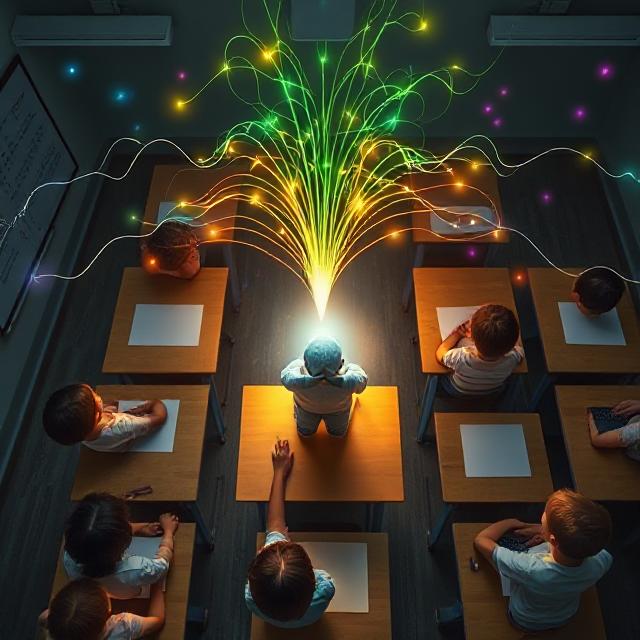
Table of Contents
Brainwaves and Learning Disabilities: What’s the Link?
Could the key to understanding learning disabilities lie in the rhythm of your brain? From ADHD to dyslexia, scientists are uncovering how abnormal brainwave patterns may underlie many cognitive challenges—and how modulating those rhythms might offer new paths for improvement.
Brainwaves—your brain’s electrical activity—aren’t just noise. They reflect your state of attention, memory, emotional regulation, and learning readiness. And when they fall out of optimal ranges, they can interfere with information processing, making traditional learning harder.
This article explores:
- What research shows about brainwaves and learning disabilities
- Key differences in EEG profiles for ADHD, dyslexia, and more
- How neurofeedback may help recalibrate brain rhythms
- Controversies, limitations, and future directions
Let’s decode how brainwaves shape the learning brain—and how we can use that knowledge to better support those who struggle.
🧠 Brainwave Basics: The 5 Core Types
Before we dive into disability-specific patterns, here’s a quick refresher on the five main brainwave bands:
| Wave Type | Frequency | State |
|---|---|---|
| Delta | 0.5–4 Hz | Deep sleep, unconscious |
| Theta | 4–8 Hz | Daydreaming, drowsiness, memory recall |
| Alpha | 8–12 Hz | Calm focus, quiet alertness |
| Beta | 12–30 Hz | Active thinking, problem-solving |
| Gamma | 30–100 Hz | Integration, insight, high-level processing |
Each learning activity—reading, recalling, solving problems—relies on a balanced blend of these waves. When one dominates or fails to activate appropriately, learning bottlenecks occur.
📊 ADHD and Brainwaves: Too Much Slow, Not Enough Fast
Attention Deficit Hyperactivity Disorder (ADHD) is the most widely studied condition in relation to brainwaves. EEG studies have repeatedly shown:
- Elevated theta waves (drowsy, unfocused)
- Reduced beta waves (alertness, task focus)
- High theta/beta ratio, especially in frontal lobes
Translation: The ADHD brain often stays stuck in a distracted, dreamlike state when it should be alert and engaged.
These findings led to the development of theta/beta neurofeedback, a protocol that trains the brain to reduce excess theta and boost beta. Research has shown modest success in improving attention, especially in children, though results vary.
Fun Fact: The FDA has approved EEG-based tools for helping diagnose ADHD in children, based on theta/beta ratios.
🔄 Dyslexia and the Alpha Disconnect
Dyslexia, a language-based learning disability, has also been linked to abnormal brainwave behavior—especially in:
- Alpha rhythms in parietal and temporal lobes (language processing regions)
- Reduced synchronization between hemispheres during reading tasks
- Timing deficits in processing auditory and visual stimuli
Alpha waves are crucial for filtering distractions and synchronizing sensory input. In dyslexia, these waves may be underactive or desynchronized, making phonemic awareness and letter-sound mapping much harder.
Emerging neurofeedback studies suggest that alpha uptraining—particularly in the left temporal lobe—may enhance reading fluency and phonological decoding.
🌀 Other Learning Conditions and EEG Patterns
Autism Spectrum Disorder (ASD)
- Increased delta and theta, especially in frontal areas
- Underconnectivity in alpha/beta frequencies
- May contribute to sensory overload and difficulty shifting attention
Auditory Processing Disorder (APD)
- Delayed neural timing of auditory inputs
- Reduced gamma synchronization during speech decoding
- Impacts listening comprehension, especially in noise
Nonverbal Learning Disability (NVLD)
- May involve parietal lobe dysrhythmia, affecting spatial reasoning
- Very limited EEG research—an area needing more study
Each of these conditions shows distinctive patterns of dysregulation, but what they share is a misalignment of rhythm and task demand. Whether it’s underactive beta during learning or misfiring gamma during integration, timing is everything.
🧪 Can We “Tune” Brainwaves to Support Learning?
Enter neurofeedback, a technique that provides real-time feedback on brainwave activity and reinforces more optimal patterns. Here’s how it’s being used:
| Condition | Targeted Wave | Goal |
|---|---|---|
| ADHD | ↓ Theta, ↑ Beta | Sharpen attention, reduce impulsivity |
| Dyslexia | ↑ Alpha | Improve reading fluency, phonemic decoding |
| ASD | ↑ Alpha, Beta | Enhance self-regulation and communication |
| APD | ↑ Gamma | Strengthen auditory discrimination |
While results vary, multiple studies suggest that individualized neurofeedback protocols can yield:
- Better academic performance
- Improved working memory
- Reduced anxiety and frustration around learning
However, neurofeedback is not a cure, and it works best as part of a holistic intervention that includes cognitive training, therapy, and skill-building.
⚠️ Limitations and Misconceptions
- Brainwave patterns don’t define intelligence.
EEG signals reflect state, not fixed ability. - Not all learning struggles show EEG abnormalities.
Environment, trauma, and stress also shape performance. - Neurofeedback is still under-regulated.
Work with trained providers—protocols aren’t one-size-fits-all. - Brainwave balance ≠ instant learning.
Improved focus must be paired with appropriate educational content.
🧭 Final Thoughts: Rethinking Learning Through Rhythm
Learning disabilities aren’t just behavioral—they’re neurophysiological, and understanding brainwaves offers a window into the real-time bottlenecks in attention, memory, and perception.
By viewing conditions like ADHD or dyslexia through the lens of brainwave patterns, we move toward precision learning support—where interventions are based on the actual electrical state of the learner’s brain.
The future of learning isn’t just smarter content.
It’s smarter cognition, tuned to each brain’s rhythm.
